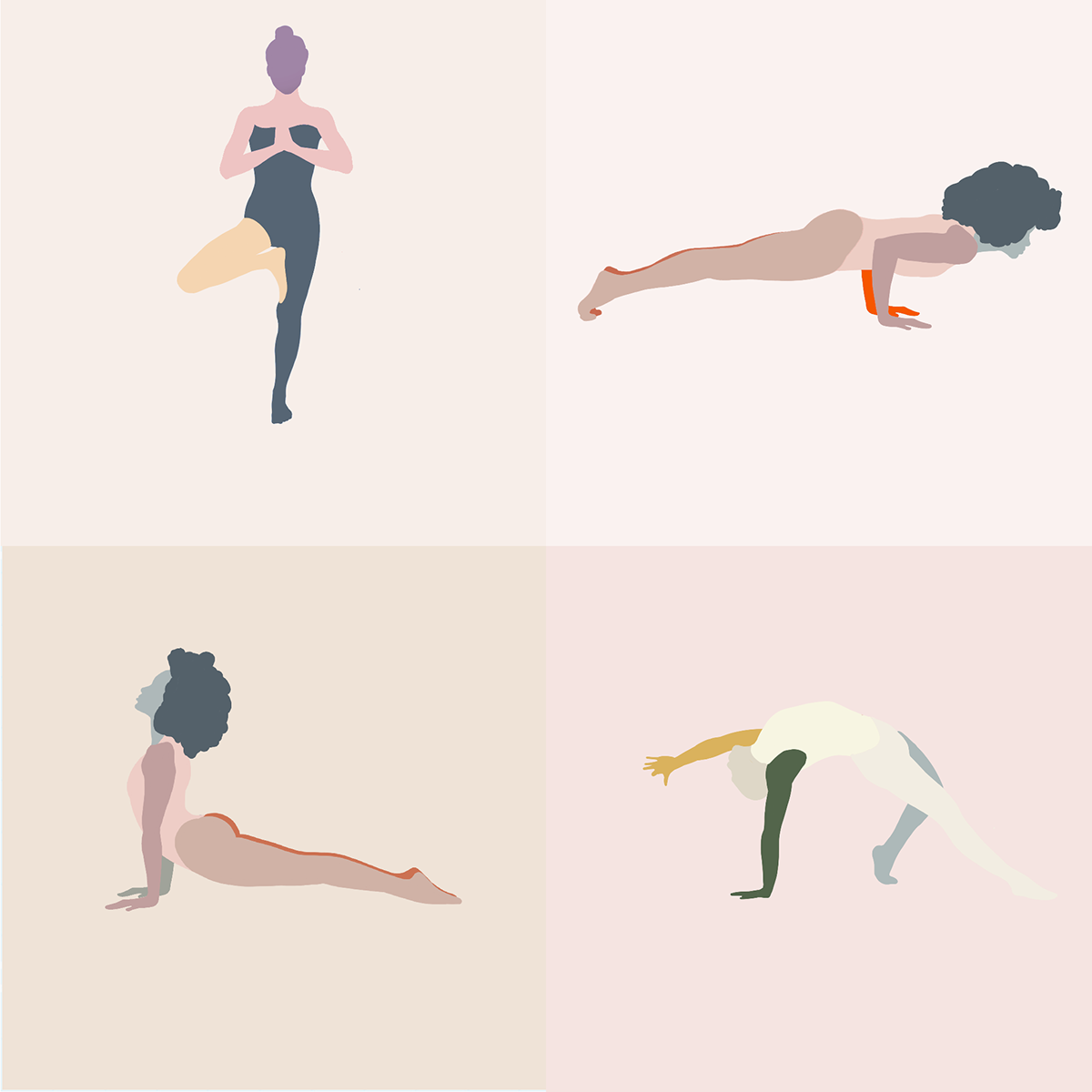
Yoga is an excellent form of exercise and can be very calming. There are over 4,000 types of yoga. Many are also performed naked. These are the basics of yoga. These styles will allow you to get the most out of your practice.
Yin Yoga
Yin Yoga is a slower version of yoga that incorporates traditional Chinese medicine principles. Advanced yoga practitioners may be able to hold the poses longer than others.
Restorative yoga
Restorative and therapeutic yoga are two types of yoga that can help with meditation. This style of yoga can help your body heal itself by working with the body's natural healing process. The low-impact movement can loosen your hips, lower blood pressure, and help you attain greater flexibility and strength.

Power yoga
There are many types and levels of power yoga. The type you choose will be determined by your goals and how often you practice the postures. Some styles require more balance, core strength, and flexibility than others. An instructor can adapt the poses to suit beginners.
Ashtanga yoga
Ashtanga yoga is a dynamic sequence of yoga poses that can be a challenging yet rewarding challenge. Primary Series poses can be contorted and require core strength as well as arm strength. Vinyasa (flowing movements) are used to link the postures, which creates a rhythmic energy that is calming and calms down. Ashtanga yoga is a practice that includes the Sanskrit names for the postures and Ashtanga numbers, as well breathing and meditation.
Viniyoga
Viniyoga yoga is an original form of yoga that adapts different yoga practices to individual student needs. It emphasizes the use of tools to personalize the process of self-discovery. Many teachers have helped to develop the technique, including T. Krishnamacharya (T.K.V. Desikachar has been widely taught all over the world.
Integral yoga
Integral yoga is a form of yoga that promotes calm, ease, and peace. It can help to live a productive life, and reveal your true self. This form of yoga encourages interfaith harmony.

Hatha yoga
Hatha yoga refers to a specific branch of yoga which focuses on the physical techniques that channel and conserve vital energy. Haha comes from Sanskrit, which means channel and preserve.
Bikram yoga
Bikram yoga is a great way to increase your core temperature, and allow you to move more freely throughout your body. Bikram is safe but can cause muscle strain and overstretching. For this reason, many Bikram instructors recommend scaling poses and taking breaks between poses to avoid injury. Also, unless you are already in good shape, it is best to consult a physician before taking Bikram yoga classes.
FAQ
What is the difference between yoga & pilates?
Although both pilates or yoga can be effective, they differ in their methods of working out. While both are based on stretching, yoga focuses on poses that challenge your core muscles and build strength.
Pilates emphasizes strengthening your core muscles, and improving your balance. It's important that you know that yoga can be used as a complement to pilates.
Do I need heat before I do yoga?
No. You don't need to warm up before performing a yoga session.
However, if your muscles are stiff or sore, stretching them before exercising can help loosen them up.
Is yoga safe for everyone?
Yoga is safe for all age groups, genders, races, abilities and abilities. Yoga has been widely practiced for thousands without side effects.
Before you start a new exercise program, make sure to check with your doctor if you have any medical conditions.
What are the side effects of yoga?
Yoga poses some risks, as with all physical activities. The most serious risk is injury. The main risk is injury.
If you're new to yoga, you might get dizzy or faint when standing on your head.
This happens because of blood pooling in the brain. But don't worry; the sensation disappears quickly.
Do downward-facing dogs if you experience chest pains. Don't hold your breath. You'll only increase your heart rate and make things worse.
How does yoga affect mental health?
Yoga is an ancient practice that originated in India. It was used as a way for people to relax and relieve stress. Yoga is used by many people to cope with anxiety, panic attacks or chronic pain.
Yoga can help improve your physical symptoms, such as backaches, arthritis, headaches, high blood pressure, and other conditions like high blood pressure. Many people who have practiced yoga report feeling calmer and happier.
What are the best yoga mats?
There are several types of yoga mats available. You can pick one based on price, size, and endurance.
A quality mat should be thick enough not to scratch your floor, but thin enough so that you can move it quickly.
An inexpensive mat might not be enough to provide sufficient support.
Statistics
- According to calorie estimates calculated at Harvard Medical School, the average 125-pound person burns about 120 calories in a half hour of hatha yoga, and a 185-pound person burns about 178 calories in that half hour. (everydayhealth.com)
- Start your Fall off right with 20% off All Access Membership when you sign up by 9/25! (corepoweryoga.com)
- About one in seven U.S. adults practiced yoga in the past 12 months, according to a 2017 national survey. (nccih.nih.gov)
- The American Psychological Association recently shared that 84% of American adults feel the impact of prolonged stress (5). (healthline.com)
- According to the Agency for Healthcare Research and Quality, falls are incredibly common among older adults in nursing facilities. Even the simplest ones can increase the risk of death (24). (healthline.com)
External Links
How To
What is your ideal position for practicing yoga?
There is no one right way to do yoga. Every person is different. You only need to know which positions feel comfortable for you.
These are some of the most common positions:
Standing poses – These poses are good for beginners. They allow you to look at your body from different angles. These poses make it easier for you to focus on your breath.
Forward bends - Forward bends are often used to open up tight areas of the body. You can do them sitting down or lying down.
Backbends-Backbends are generally considered advanced poses. You should consult your instructor before you attempt one.
Inversions - Inversions are poses that require you to balance yourself upside down. This is a difficult but rewarding form of yoga.